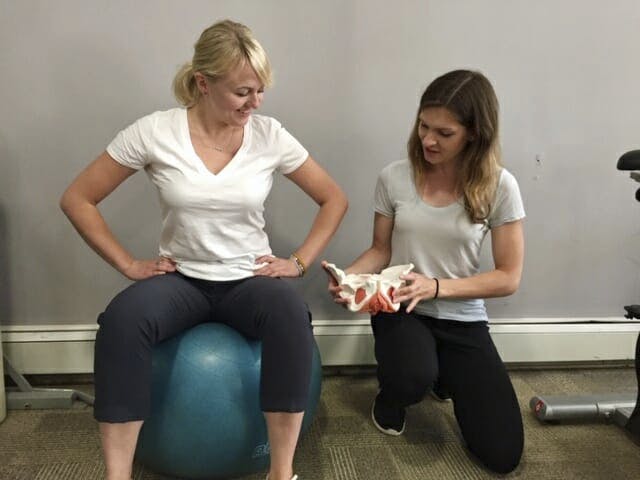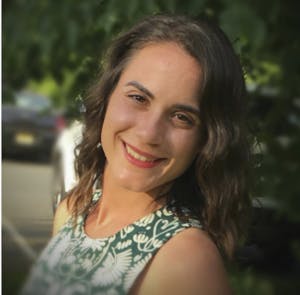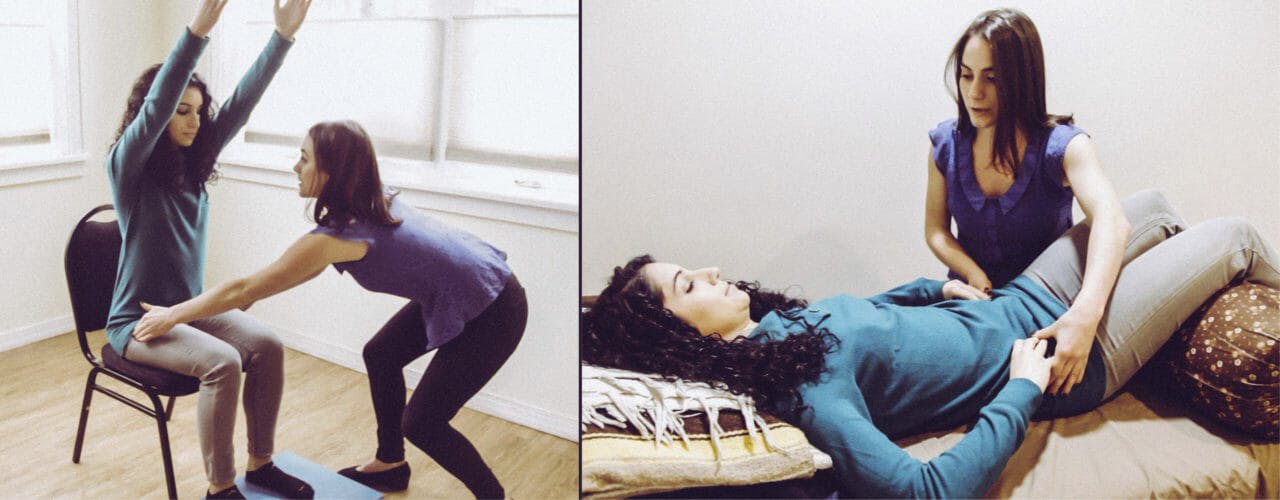Welcome Melissa Jesski, PT, DPT, our newest physical therapist to join the Park Sports team! Melissa is originally from Chicago and completed her Doctorate of Physical Therapy at Saint Louis University in Missouri. Melissa’s midwest sincerity combined with her versatile background in orthopedics, pelvic floor, and aquatic therapy makes her a wonderful addition to our 6th Avenue location. From the start, it was clear that Melissa has a “can-do” attitude and a strong knack for patient education that radiates onto everyone she works with. This type of quality care will undoubtedly help our patients achieve their maximum potential during their rehab journeys. See all that Melissa had to say in her recent one on one interview:
What made you choose PT out of all the healing professions, and was there an “a-ha moment” when you realized this was your passion?
My love for PT is one that grew slowly and steadily, rather than overnight. In high school, I was an athlete – mostly gymnastics and track. During that time, I, unfortunately, developed recurring ankle sprains and became a frequent flyer at our school’s Athletic Trainer. I remember doing my rehab exercises and thinking, “How is it possible that I can sprint 400 meters with my eyes closed, but I cannot simply stand on a Bosu ball with one foot?!” The whole rehab experience was both self-actuating and fascinating. My interest expanded even further at a hospital career fair night, where I learned all about the physical therapy profession. That night I realized that my own recovery with a sports injury could expand to other populations, including burn victims, geriatrics, and neurology patients. I knew I wanted a profession that could impact people’s lives for the better, and PT was clearly the way to do it. It’s safe to say that I chose this profession right out of high school and hit the ground running. I have not looked back since!
What are your hobbies outside of the clinic?
I absolutely love BIKING! Any chance I get – whether it be to and from work, exploring a new part of the city, or just en route to a restaurant – I prefer to experience the world via bike. I also love food and travel (ideally both at the same time)! It doesn’t matter where it is, as long as it is some place new I jump right on board. My next planned getaway is to Banf, Canada.
Tell us more about your background in aquatics and pelvic floor therapy!
I want to first start by saying that aquatics is such a powerful and untapped into tool in physical therapy! When I was a student, I had a hodgepodge of jobs. One was as a PT Aide that happened to be at a pediatric aquatic clinic. There I interacted with kids who had disabilities ranging from cerebral palsy (CP) to Down’s syndrome. On land, I saw that these kids were not very energetic – they were seemingly shy and did not respond well to other PT tactics. However, I could also see that deep down they wanted to just play like kids. Once we got them in a pool, it was a complete energy shift! They were free to splash all over the place and enjoy what gravity had previously weighed down. Flash forward to my clinical rotations in PT school, and I made sure to get experience in an aquatic setting. Beyond pediatrics, I saw how pools work as a good in-between for complex patients who cannot weight bear well on land. Gains for these patients might happen faster in a pool setting and instill the strength and confidence they need to get back to standard PT.
My interest in pelvic floor therapy happened while working alongside pelvic floor therapists. At first, I had no idea what it entailed. All I knew was that this group of women were exceedingly grateful to their therapists. Unfortunately, the difficulties women experience both during and after pregnancy are often not coffee table conversation. I wondered why I myself, as an educated “science person,” had never heard of stress incontinence or prolapse. I realized the disconnect between what the average person knows vs actually experiences during pregnancy and saw PT as a way to bridge that gap.

Is there anything that makes your clinical approach unique?
I certainly place a huge emphasis on creating individual goal-oriented treatment plans. Something I ask all of my patients is, “What do you want to get back to, and how can I help you get there?” With whatever I do, I am thinking about the long term! This means integrating dynamic functional movements into therapy, not just isolated exercises. For example, if a kid needs to get back to playing soccer, doing ankle pumps is only a small part of the picture. I will also analyze their core strength and endurance, so that kid doesn’t have to worry about their joints eventually failing on them. Lastly, I find it very important to educate people on WHY they are doing certain exercises. Getting an individual to understand that X and Y lead to Z is key to building their exercise adherence.
What do you think is the most important aspect of the patient-provider relationship?
In one simple statement – it has to be a team effort. Patients deserve the opportunity to give their provider feedback about what is and is not working, just as much as providers need to be clear in their explanations. Luckily, physical therapists get to see patients throughout their entire journey and have many chances to reevaluate progress.
Why are you excited to join the Park Sports team?
I definitely have a sense of autonomy at Park Sports that I have not experienced at other PT settings. This allows the provider to directly do what’s best for the patient without any loopholes. Also, having exposure to a versatile patient population is something that only a clinic in Brooklyn can offer. Lastly, the team effort and sense of encouragement is palpable at Park Sports. These therapists are constantly learning and bouncing ideas off one another to better themselves and their patients. You can’t really ask for more when it comes to quality patient care!
To meet Melissa in person and see her treatment in action, click below to schedule an appointment, or visit our 6th Avenue location.
.png?auto=format&auto=compress&h=150)

